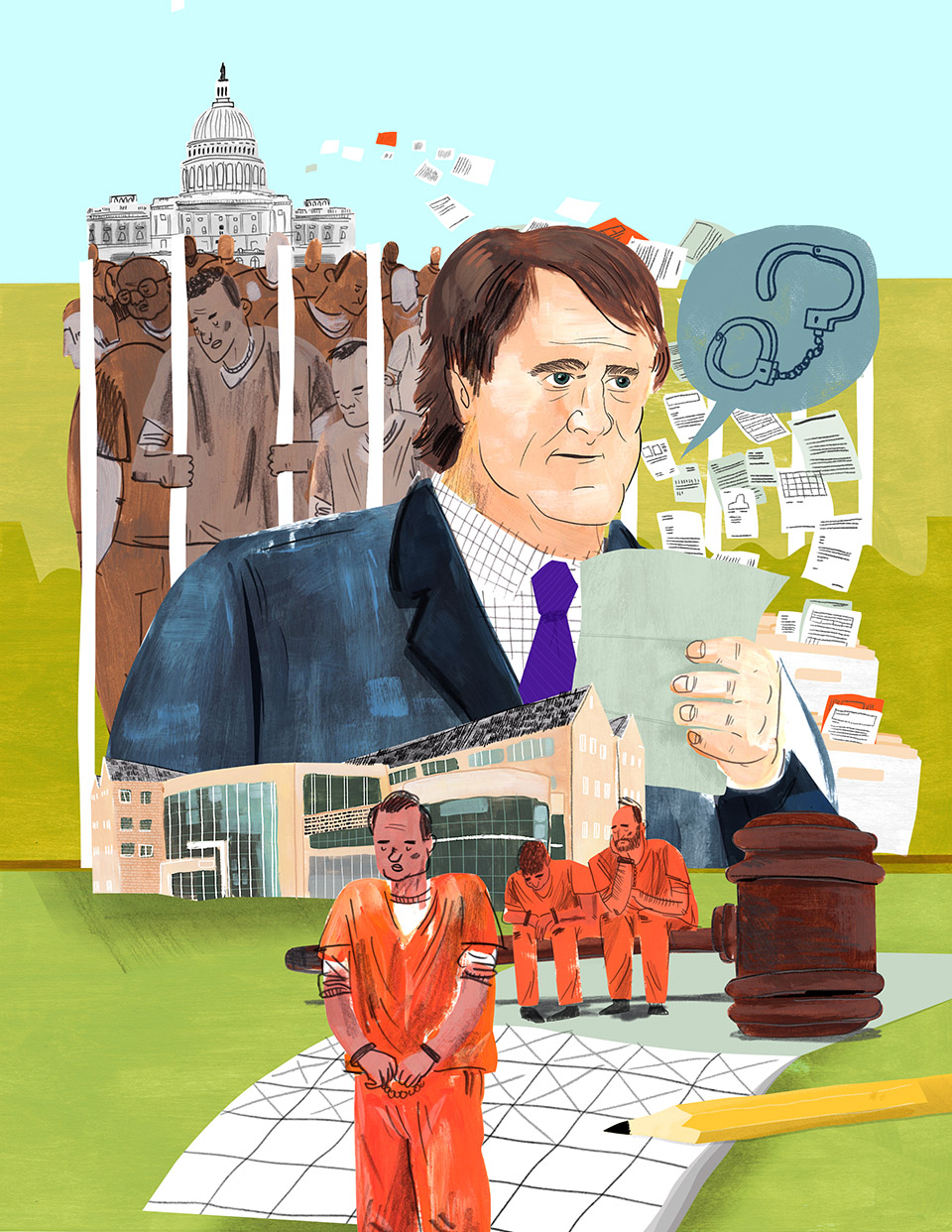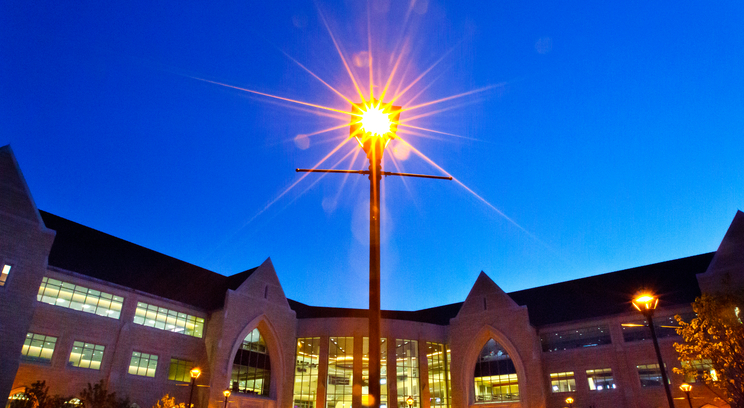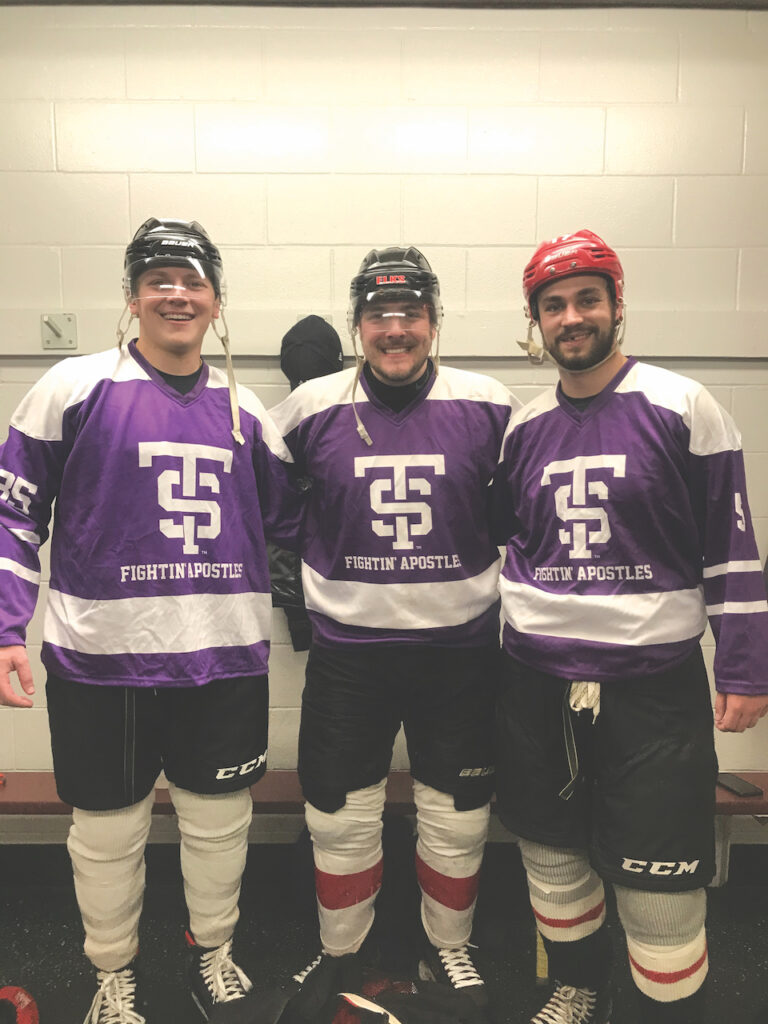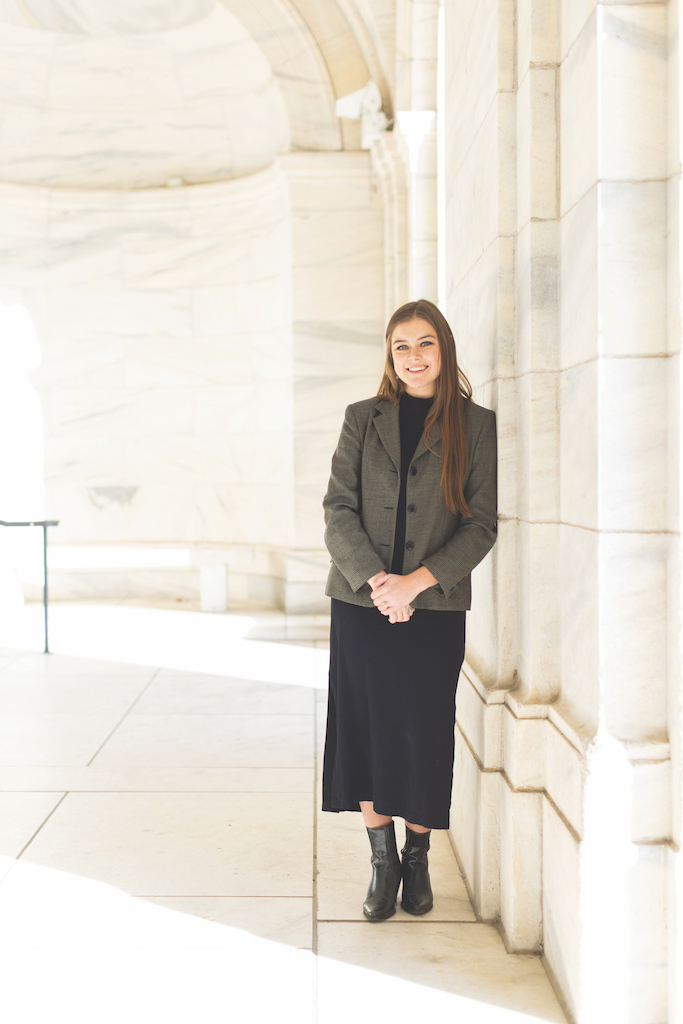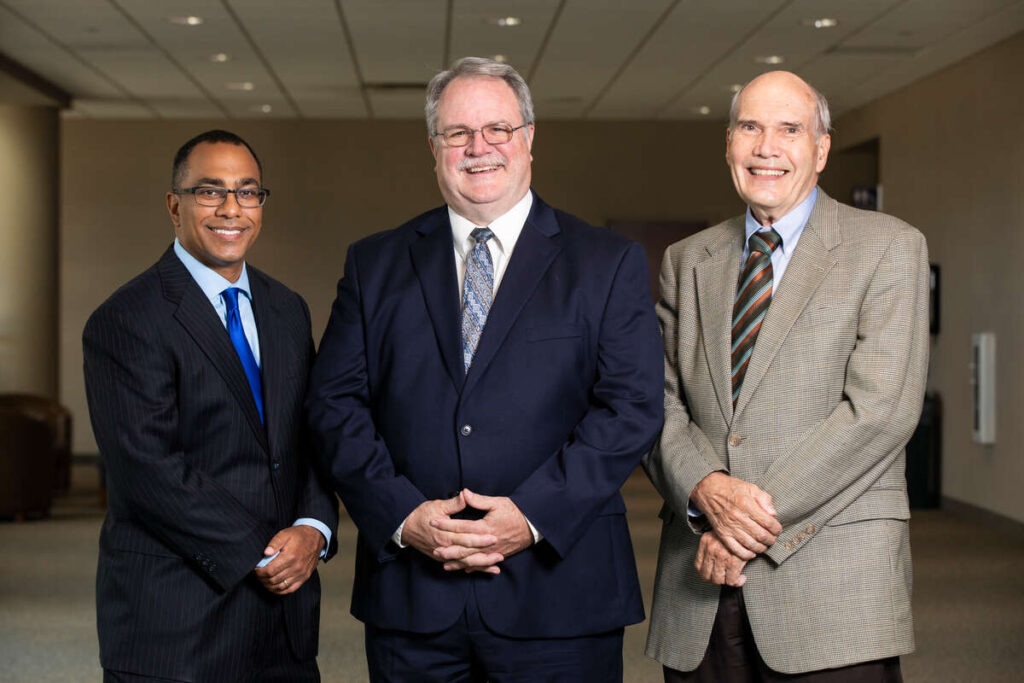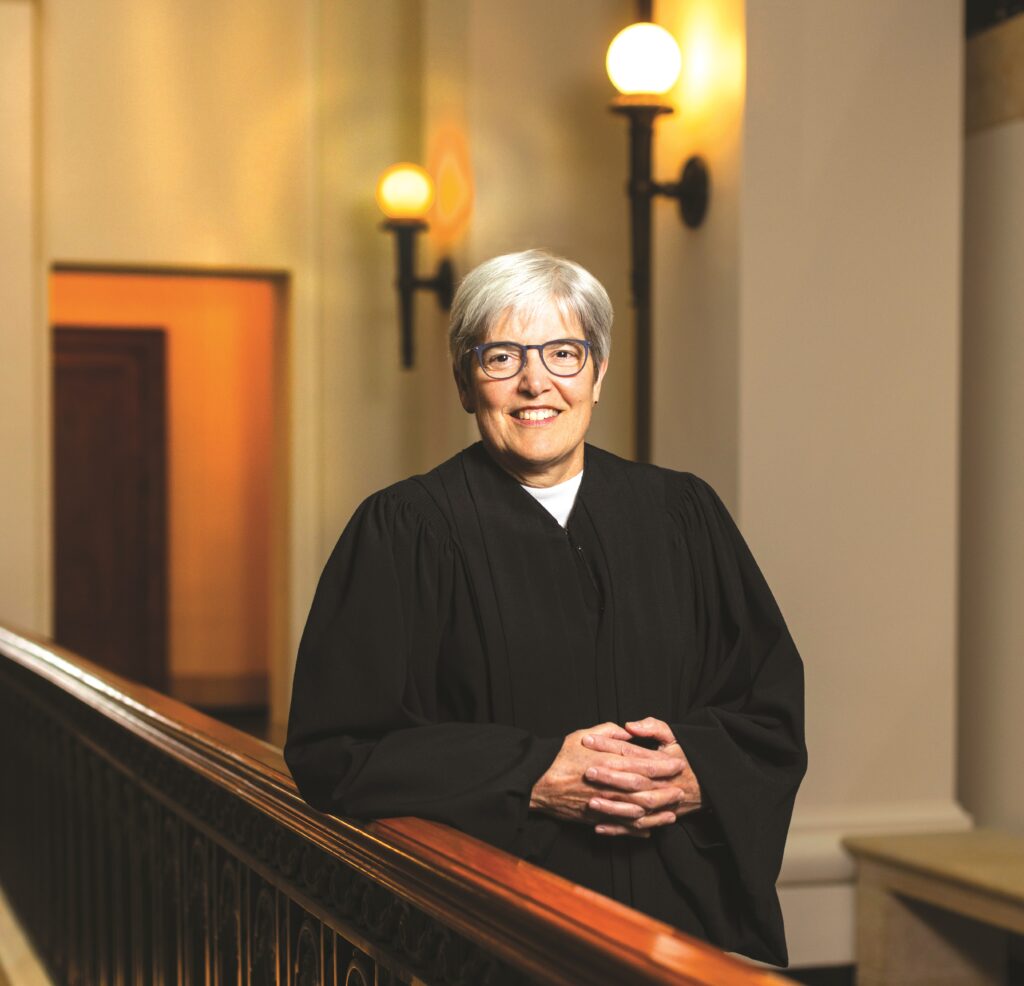The scene: a briefing room at the White House. Date: March 31, 2016.
The audience: a diverse group of administration officials, attorneys, human rights activists and former prisoners who had received presidential grants of clemency.
The day before, President Barack Obama had announced another 61 such grants, bringing the total of prisoners whose sentences he had commuted during his presidency to 248. That same day, however, The Washington Post had run an article critical of the administration for not doing enough to act on the thousands of petitions for clemency from federal prisoners serving lengthy sentences. The article prominently quoted a law professor – an expert on clemency – calling the grants nothing to celebrate when more than 9,000 petitions from eligible prisoners remained pending.
The source quoted: Professor Mark Osler of the University of St. Thomas School of Law.
So when White House counsel Neil Eggleston stepped to the podium in the briefing room to chastise “naysayer[s]” and “law professors ... who were critics yesterday,” it was pretty clear whom he meant.
Eggleston said people ought to take cases themselves, get their students to work on commutations and “get a petition in.”
What Eggleston didn’t realize is that Osler did, and does, take cases himself: He personally has written three petitions and supervised the work on 10 others. Only a year after joining St. Thomas in 2010, Osler founded the nation’s first federal commutations clinic at the law school, in which students under Osler’s direction prepare and file clemency petitions to the president. He trained hundreds of lawyers nationwide to handle clemency petitions in a pro bono effort called Clemency Project 2014. And Osler co-founded, with New York University School of Law Professor Rachel Barkow, the privately funded Clemency Resource Center (CRC) at NYU to deploy full-time attorneys to prepare clemency petitions. (The next day, another member of the White House counsel staff said Osler hadn’t been the intended target of Eggleston’s remark.)
Rethinking Long Sentences for Low-level Offenders
It’s understandable that Osler’s achievements might have been overlooked; he is unfailingly modest about them. A visitor to his fourth-floor office at the School of Law will find prestigious-looking plaques recognizing his distinguished service as an assistant U.S. attorney in the U.S. Department of Justice (DOJ) stuffed in a drawer. Instead, Osler’s office is adorned with sports gear, a SpongeBob SquarePants doll and photos of his sons. His Yale Law School degree hangs askew on the wall in a plain wood dollar-store frame.
It’s also understandable that his comments would catch the attention of the White House. Osler has become one of the nation’s most prominent voices on clemency, with opinion pieces in media outlets such as The New York Times and The Washington Post, and articles in academic journals at schools including the University of Chicago and Stanford University.

Senior U.S. District Judge Mark Bennett, with whom Osler has co-authored several pieces, said Osler’s “DNA and fingerprints are all over” the current push for presidential sentence commutations. “Mark has done more to urge a national movement for clemency and push the [Obama] administration than anybody I’m aware of in the United States,” Bennett said.
Osler looks every bit like the prosecutor he once was: square-jawed and broad-shouldered (though topped off with what he calls “crazy professor hair”).
After graduating from Yale, he joined the DOJ, often prosecuting low-level drug offenders whose long sentences troubled him. Some defendants are still in prison “because I put them there,” Osler said.
Around the time he left the DOJ to take his first academic position at Baylor Law School, the issue of clemency caught Osler’s attention. The president under whom Osler had worked, Bill Clinton, issued a pardon on his last day in office to fugitive financier Marc Rich. Rich’s wife had been a large donor to Democratic campaigns and the Clinton Library. Osler was incensed. The New York Times called it “a shocking abuse of presidential power.”
“It was granting privilege to the privileged, and so much of what we had been doing was impoverishing the impoverished,” Osler remembered.
He began advocating for prisoners, particularly those serving harsh sentences for drug crimes. He won the landmark Spears v. United States decision in the U.S. Supreme Court, giving judges discretion to reject the onerous 100-to-1 sentencing ratio for crack versus powder cocaine. Before leaving Baylor, Osler took on the unjust prosecution in Texas of people accused of drug crimes, a story depicted in the film “American Violet.”
St. Thomas and the First Commutations Clinic
Osler came to St. Thomas, in part, to be able to establish his first-in-the-nation commutations clinic.
On the first day, meeting the students who had successfully sought one of the coveted spots at his clinic, Osler recalled, “There was a sense of history, that we were pushing a boulder that was not moving.”
One of his former students, Sara Sommervold, is now the intake attorney at Northwestern University School of Law’s Center on Wrongful Convictions, where she uses what she calls the most important skill she learned in the clinic: narrative.

Sommervold called Osler “a brilliant narrator. He’s incredibly gifted at taking the facts of the case and finding the thread that is effective in persuading the decision-maker that this person deserves mercy.”
David Best, another of Osler’s former clinic students and now executive director at Twin Cities Christian Legal Aid, said Osler let his students sort through requests from prisoners and choose which to represent, giving students a glimpse into the difficult decisions many legal aid attorneys have to make. Best knew he wanted to work with Osler from the first day of Criminal Law when Osler showed the class 10 works of art related to various criminal charges, then discussed each.
“I appreciated his decision to start a conversation through art. It was a nontraditional and very creative way to get people to think,” Best said.
In the clinic, Osler said he and his students regularly gather around a table talking about current clemency news and historically significant events, including history they’ve made.
“Because they are part of moving that boulder, they see the ability to change things,” he said.
This summer, Osler and nine former clinical students – alumni Marc Spooner ’12, Ashley Bennett ’13, Derek Hansen ’13, Allison Kadrmas ’14, Nicole Swisher ’14, Eric Hylok ’15, Brittany Sandager ’15, Jamie Waldon ’15 and Natasha VanLieshout ’16 – received word that six of the clients whose cases they worked on during law school would be freed from federal prison. Waldon helped free five additional men through the work he’s doing as a full-time lawyer with the CRC alongside Hylok and four other fellows. (These clemency numbers are as of Sept. 1, 2016.)
A More Robust Use of the Clemency Power
Osler’s clemency work includes his colleagues at St. Thomas as well. Professor Hank Shea, senior distinguished fellow, accompanied Osler to his most recent meeting on clemency at the White House. Shea called Osler “a wonderful combination of faith, compassion, fairness and integrity. I could tell from his first year at St. Thomas that he was going to do important things for Minnesota and the nation.”
The regard is mutual. “I don’t think any of this would have happened without Hank Shea,” Osler said. Because of Shea’s judgment and experience as a high-level federal prosecutor, Osler said, “When I get stuck on something, he’s the one I talk to. He’s the perfect person to have in the office next to you.”
Osler has sought collaborators outside the school – from fellow academics to federal judges – to join him in urging a more robust use of the clemency power.
“Honestly, we started talking about [the CRC concept] in the hotel gym,” said Barkow, the NYU law professor who met Osler at a conference on drug sentencing at Valparaiso University School of Law, where they were both speaking. Praising Osler’s steady persistence and ability to put ideas into practice in the real world, Barkow said, “There’s no one whose judgment on clemency reform I trust more than his.”
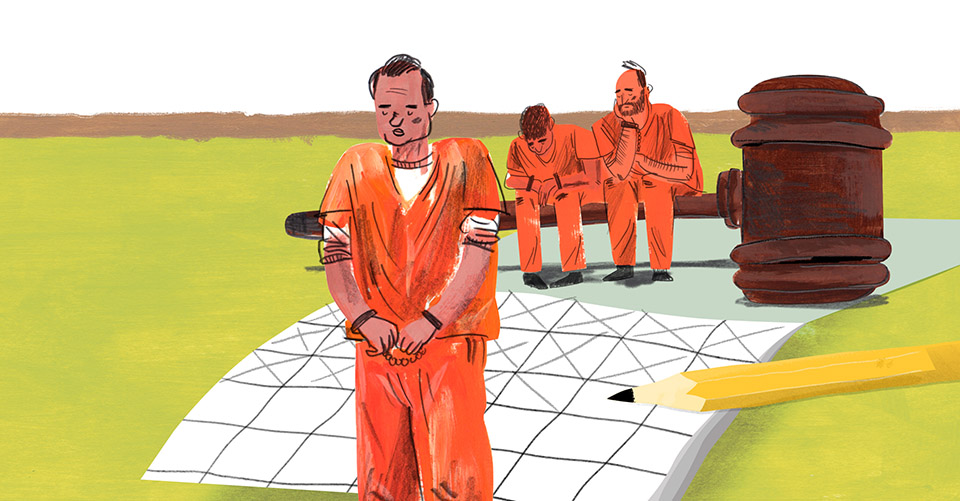
Nkechi Taifa, advocacy director for criminal justice at the Open Society Foundations, helped set up and took part in Osler’s series of meetings at the White House. Taifa cited his credibility as a former prosecutor as one of Osler’s strength. “It was great to be able to team up with someone with opposite credentials from me,” she said.
Those prosecutorial credentials help give Osler a “unique perspective on clemency, because he’s not living in a swamp of theory,” observed Jesse Wegman, a member of The New York Times editorial board who talks to Osler regularly about clemency issues. “In addition to being a deep thinker, he’s actually had to ask for particular sentences in front of a judge.”
Osler has helped plant clemency efforts in other law schools, most recently at Harvard, which brought him in to help train 26 law students and nine supervising attorneys.
“Mark was both hugely influential in our thinking and an indispensable resource,” said Larry Schwartztol, executive director of the Criminal Justice Policy Program under which the clemency project operates. Describing a three-hour training in which Osler taught the nuts and bolts of federal sentencing and lectured on the ancient roots of clemency, Schwartztol said Osler was “so fluent at all of those levels.”
Schwartztol said students benefit from doing the clemency work in a number of ways, from learning how to immerse themselves in their clients’ stories to crafting an effective argument. And, he added, “These petitions written by our students may be reviewed by the president of the United States.”
A Rousing Speech at the White House
In that White House briefing room back in March, it was Osler’s turn to speak. He started quietly but determinedly, building into an eloquent but passionate “rant,” as he called it.
Holding up a 1,700-year-old Roman coin bearing the image of the goddess of mercy, Clementia, Osler said, “What this means is that, millennia ago, clemency – mercy – wasn’t just a personal value we were supposed to show to each other. It was supposed to be part of the state, part of the government, part of justice, part of what identified the entire society. Hundreds of thousands of Roman citizens walked around with Clementia in their pockets. How did we lose the goddess?”
Spontaneous clapping erupted.
Osler leaned forward intently. “And now, I guess, I can’t stop my rant here. I heard the White House counsel talk about the naysaying law professors.”
The audience fell silent, waiting to hear what he would say.
“I guess that’s me,” Osler went on. “Because it was me in the Post today saying that this wasn’t enough yet. It’s not time to brag yet. And it’s going to be me in The New York Times tomorrow saying the same thing: that we’re not done yet.”
Hoots and hollers erupted from the audience.
“Yesterday, when those grants were made, my phone rang. And some of you out there know what this is like,” Osler said, his voice trembling with emotion, his eyes searching out his former students. “Eric Hylok, Jamie, you know. I don’t want to answer the phone. Because I’m going to pick up the phone and there’s going to be a man I know, whose story I’ve told, and I’m going to have to tell him, ‘You’re not on the list.’ And then there’s going to be a silence, and he’s going to tell me that his mother is dying, that his kids are growing up. And all I can say is, ‘I’m so sorry.’ And then I hang up, and then the phone rings again.”
Comparing returned citizens who had received clemency to puzzle pieces that had been put back where they belong, Osler said that clemency is more than filling in those blank spaces in society.
“We’re putting that piece of the soul back in the Constitution of the United States. I don’t think that makes me a naysayer. What I’m saying, and what so many of the people in this room are saying is, ‘Let’s do this!’”
With that, jaw set, eyes ablaze, Osler leaned back as applause filled the room.
Jeanne Bishop is a public defender for Cook County, Illinois, and author of the book, Change of Heart: Justice, Mercy, and Making Peace with My Sister’s Killer.
Read more from St. Thomas Lawyer.
